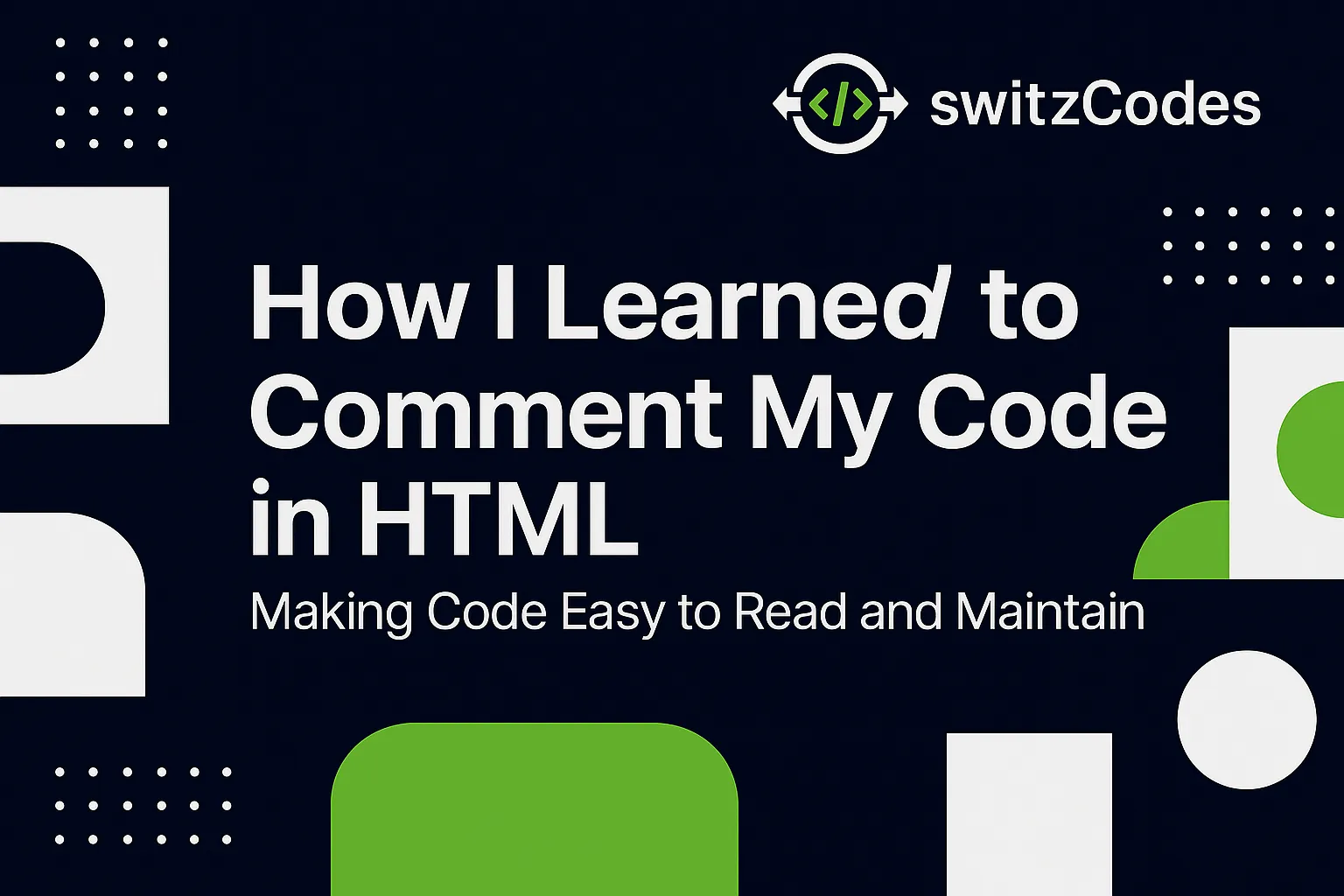
📄 How I Learned to Comment My Code in HTML - Making Code Easy to Read and Maintain
📅 October 6, 2025
✍️ By Evans
Hey friends! 👋
When I first started writing HTML, my code looked like a wall of tags — no explanations, no reminders, just chaos 😅.
Then I discovered something that completely changed the way I organize my code: HTML comments!
They don’t show up on your webpage, but they help you (and others) understand what’s going on inside your code.
💭 What Is a Comment in HTML?
An HTML comment is text you write only for developers — the browser ignores it.
Here’s what it looks like:
<!-- This is a comment -->
<p>Hello World!</p>
The line inside <!-- --> won’t appear on your webpage.
It’s just a note in your code.
✍️ How I Use Comments
I started using comments to separate different sections of my code.
Example:
<!-- Header Section -->
<header>
<h1>Welcome to SwitzCodes</h1>
</header>
<!-- Main Content -->
<main>
<p>This is where the main content goes.</p>
</main>
<!-- Footer -->
<footer>
<p>© 2025 SwitzCodes</p>
</footer>
Now, when I scroll through my code, I can instantly tell which part does what.
🧠 Why Comments Are Super Helpful
Here’s what I’ve learned about using comments wisely:
- Stay organized – Labeling sections makes your HTML easier to read.
- Explain tricky parts – Leave notes for yourself (or others) about why you did something.
- Debug faster – You can “hide” parts of your code temporarily by commenting them out.
For example:
<!-- <p>This paragraph is hidden for now.</p> -->
That’s a trick I use when testing layouts.
🚫 A Small Warning
Don’t overuse comments — too many can clutter your code.
Just add them where they add clarity.
And remember: comments are visible in your page’s source code, so never put private info in them (like passwords or notes you don’t want others to see).
🎯 What I Learned
Learning to comment my HTML was a small step, but it made a big difference.
Now, when I style my pages, I know exactly where and how to apply changes without breaking my layout.
Now, my code feels cleaner, more readable, and easier to update.
It’s one of those habits that separates a beginner from someone writing smart, maintainable code.
👉 What’s Next?
Up next, I’ll dive into HTML Meta Tags – Controlling How My Page Appears in Search Engines. That’s where I’ll start learning how to make my pages stand out on Google! 🌐
Catch you in the next one, and keep coding! 💻
— Evans 🚀
